
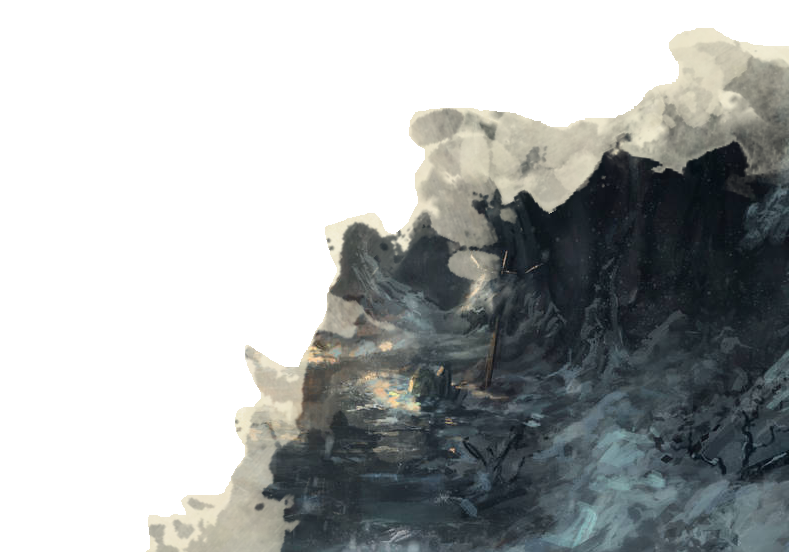
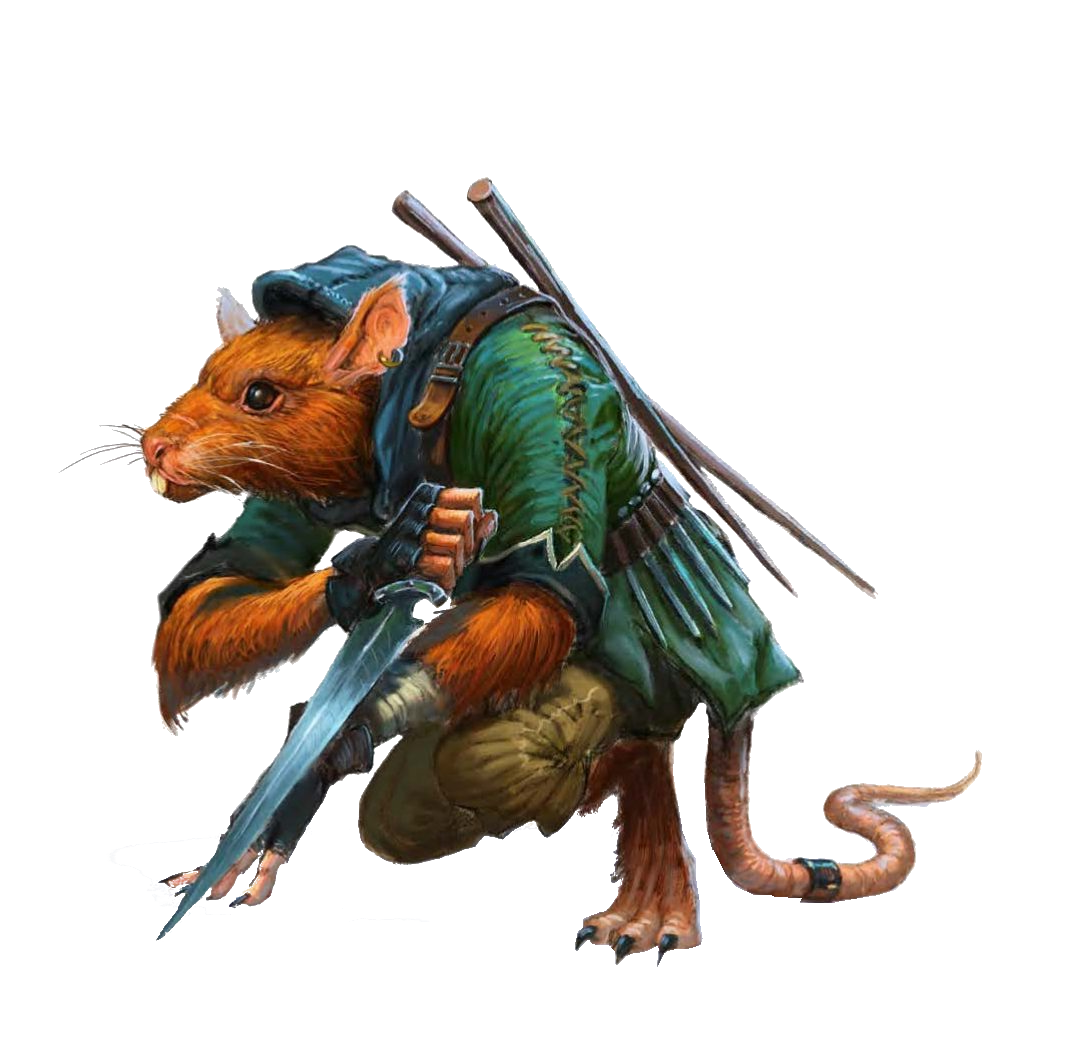
Credits
- Created by Ogskive
Art Credit
- Cover by hoanglap
- Watercolor stains by Jared Ondricek
- Mousefolk by Kobold Press
- Tiny party by Barbara E. M. Henriques
- Snowy path by TomTC
- House gremlin by Aaron Miller
- Tavern by whatyoumaydo
- Nix by pigeon-princess
- Feywild by 2blind2draw
- Pudding from HiClipart
- Dungeon by panjoool
- Mousefolk by chichapie
- Forest by rezzyg
- Raccoonfolk by Thomas Wizard o' Fortune
- Sky by NesoKaiyoH
- Frog from D&D Beyond
Special Thanks
- To the Peterson squad for playtesting!
- To Barbara (u/NadjaRose on Reddit) for the beautiful, original TRU artwork!
- To Phylea and flodo44 for expert wording advice!
- To r/UnearthedArcana for accepting TRU onto the Curated List of homebrew!
- To everyone who has enjoyed playing as Tiny characters!
- If you like puddings, check out the oogoo race by u/Synergenesis: https://www.gmbinder.com/share/-LwtPqhKlzyf_N6qZ2T5
Send me your Tiny races!
- Go to https://www.gmbinder.com/share/-MRRrOXZa8GQHtTlZOgO for Tiny races made by the D&D homebrew community.
- Message u/Ogskive on Reddit with a link to your Tiny race (or subrace) to add it to this list!
Contents
Playing and Creating Tiny Races.......................3
- Tiny Stature by the Rules...................................................4
- Optional Rules....................................................................4
- Notes on Making Tiny Races.............................................4
Supplementary Races.........................................5
- Gremlin................................................................................5
- Nix........................................................................................7
- Pudding...............................................................................9
- Wealdkin............................................................................11
Tiny Racial Feats................................................13
Minuscule Mounts.............................................15
Preface
This supplement presents a list of rules for playing Tiny-sized player characters. It also provides several options for Tiny races that are intentionally setting-agnostic and can be introduced into any D&D campaign. Speak with your Dungeon Master if you'd like to play a Tiny character and whether or not they would like to use any of the optional rules presented within.
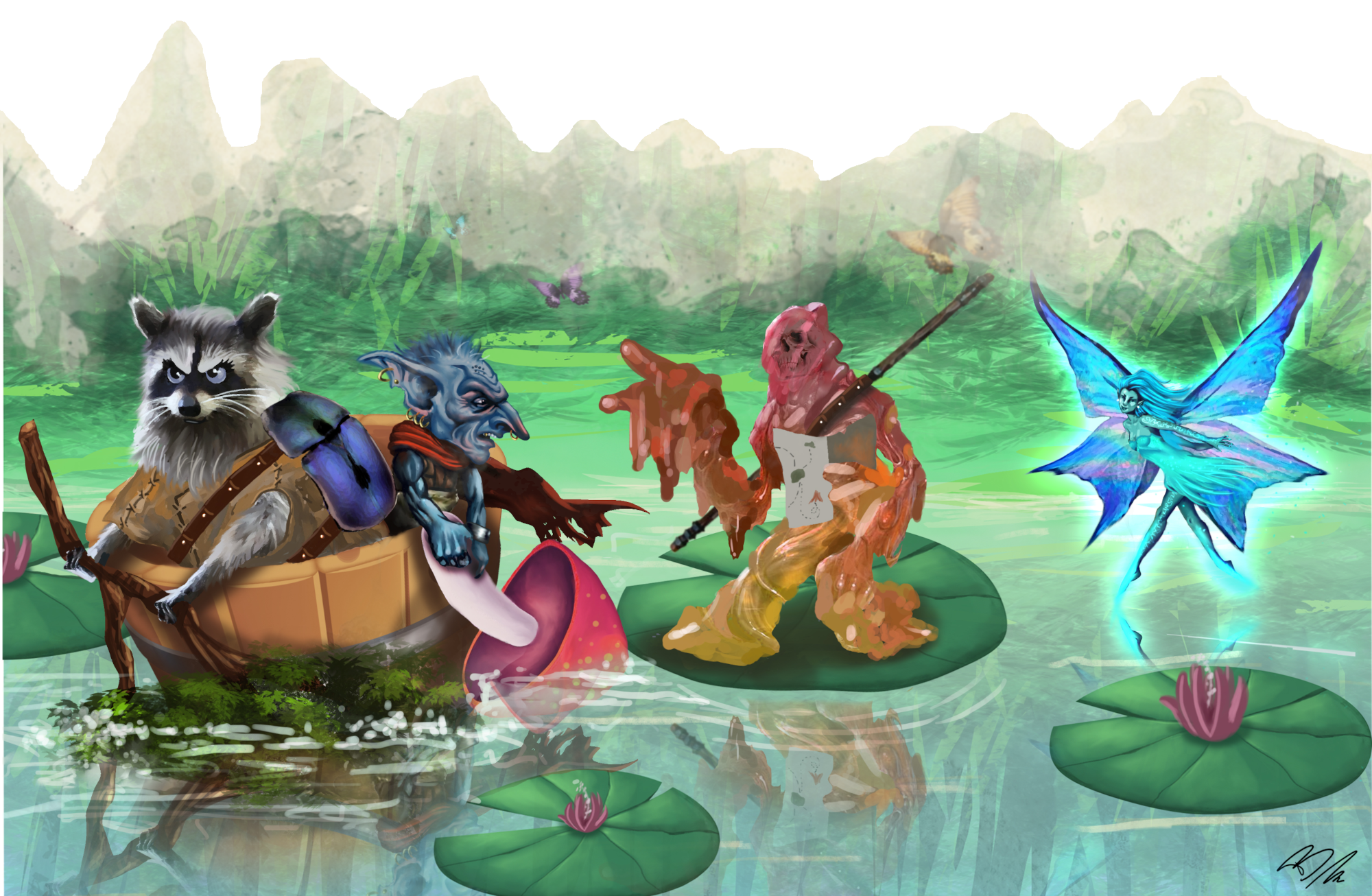
Playing and Creating Tiny Races
Beneath the noses of humans, elves, and other giants, a bustling world full of teacup peoples make trade, wage war, and write history. Overlooked by most due to their height, they contain as much ambition, emotion, intellect, and diligence as taller folk. It's time now for the pipsqueaks to emerge from the tree hollows, sewer pipes, underbrush hideaways, and secret nooks to take the stage.
Tiny Races Underfoot contains a complete guide to playing Tiny-sized races for your Dungeons & Dragons adventures. Minuscule heroes are a staple of the fantasy genre, and including them in your campaign opens a veritable can-of-worms of possibilities. When you are introducing Tiny races into your campaign, you can choose to roll on the Tiny Troubles table for an event to establish such races into the world.
Why No Ability Score Penalties?
As you will read in the optional rules and the racial traits of the supplemental races, there are no ability score penalties for Tiny-sized races. These Tiny race rules are concerned mainly with simplicity and providing the tools for creating enjoyable characters. While penalties to ability scores such as Strength and Constitution may be realistic, they aren't necessary for balance purposes, and such penalties would only serve to limit the breadth of possibilities when creating a Tiny character.
Tiny Troubles
| 1d4 | Trouble |
|---|---|
| 1 | Imps have dug a network of narrow tunnels between the Nine Hells and the Material Plane. Officials have no choice but to send a team of minuscule adventurers to investigate the tunnels and put a stop to the invasion. |
| 2 | A legion of marauding hill giants have consumed nearly all the townsfolk they could find, leaving behind only the littlest residents. When settlers arrive to repopulate the town, they are thwarted by the diminutive survivors who have become accustomed to their spacious arrangements. |
| 3 | A prophecy deciphered by stargazing druids said "The light of heart will now take the reigns, propelling our destinies ahead." With no other candidates coming forth, the literal light of heart have taken this as a sign. |
| 4 | A gigantic, otherworldly diamond is guarded by a gauntlet of tripwires, pressure plates, and massive portcullises. The local thieves' guild is planning a heist with their tiniest operatives who can easily bypass the traps, though they may have difficulty lifting the titanic gemstone. |
Tiny Stature by the Rules
This section contains everything about being Tiny size from various Dungeons & Dragons rulebooks, and serves as a quick reference guide when playing a Tiny character.
Food and Water
Page 111 of the Dungeon Master's Guide lists how much food and water a creature needs per day based on their size. A Tiny creatures need ¼ pounds of food and ¼ gallons of water per day.
Grappling and Shoving
The target of your grapple or shove must be no larger than one size larger than you. Tiny creatures can only shove and grapple Small or smaller creatures.
Lifting and Carrying
The rules listed below are only for Tiny creatures. See page 176 of the Player's Handbook for the complete rules on how to handle Lifting and Carrying.
Carrying Capacity. Your carrying capacity is your Strength score multiplied by 7.5. This is the weight (in pounds) that you can carry.
Push, Drag, or Lift. You can push, drag, or lift a weight in pounds up to twice your carrying capacity (or 15 times your Strength score). While pushing or dragging weight in excess of your carrying capacity, your speed drops to 5 feet.
Maps and Movement
A Tiny creature's space is a 2½-by-2½-foot square. Four creatures of Tiny size can fit in a 5-foot square.
You can move through a hostile creature's space only if the creature is at least two sizes larger than you (size Medium for Tiny creatures). Remember that another creature's space is difficult terrain for you.
A creature can squeeze through a space that is large enough for a creature one size smaller than it. The Player's Handbook doesn't mention the size of a space a Tiny creature can squeeze into, but a Tiny creature could reasonably squeeze through a 5-inch opening. See page 192 of the Player's Handbook for the penalties of squeezing.
Mounted Combat
A willing creature of size Small or larger and that has the appropriate anatomy can serve as a mount for a Tiny creature. See page 198 of the Player's Handbook for the complete rules on mounted combat, and see the Minuscule Mounts section at the end of this supplement for suitable mounts.
Weapons
Tiny creatures have disadvantage on attacks rolls using heavy weapons.
Optional Rules
Since there are no Tiny races in the Player's Handbook, there are gaps in the rules concerning Tiny characters. This section extrapolates on the rules in the Player's Handbook, and each rule is at the DM's discretion to include in a game.
Armor and Clothes
Armor and clothing must be specially made for Tiny characters, though the considerable reduction in raw materials needed to cover a Tiny creature is a boon. The cost for armor and clothes made for a Tiny character is ¾ of the normal price, and the weight is ¼ of the normal weight.
At the DM's discretion, you may also be able to purchase or find similarly scaled down items, such as backpacks and bedrolls fit for Tiny creatures.
Shrinking
If an effect such as the enlarge/reduce spell shrinks a Tiny creature to a smaller size category, they become 1 inch in height but are still considered Tiny.
Weapon Restrictions
The weapons in the Player's Handbook are designed for Small and Medium creatures. Tiny creatures have several restrictions when using these weapons.
Tiny creatures are unable to wield heavy, two-handed, or versatile weapons. Wielding any other weapon requires the use of two hands.
Notes on Making Tiny Races
If you are creating a Tiny race with the intention of it being an option for players to create characters with, keep in mind the following points when assigning racial traits.
1. Being Tiny comes with inherent advantages and disadvantages, but is altogether beneficial. Your goal when creating a Tiny race is to ensure they are roughly equivalent in power to other races. Due to their size alone, the opportunities available for Tiny characters to excel in and out of combat are numerous. Consider how Tiny characters can take advantage of cover that larger creatures can't use, allowing them to duck out of harm's way in combat or to infiltrate an otherwise open, airy establishment. Additionally, Tiny characters are able to mount creatures of size Small or larger, allowing them to move along with their Medium-sized allies that have superior movement speeds. As such, it is wise to choose racial traits conservatively, and recognize how the racial traits interact with the size category.
The major downside of being Tiny is having a dramatically reduced carrying capacity. However, Tiny characters can simply rely upon pack animals or their larger companions for transporting items, and as such carrying capacity isn't a common concern for these characters.
2. Ensure that members of a Tiny race are viable for all available classes. Spellcasting classes are attractive to Tiny characters due to the lack of reliance on heavy equipment. However, a player should be able to play any combination of class with their Tiny race, unless there is a compelling reason otherwise in the race's lore. Avoid introducing racial traits that penalize martial characters, as the optional rules presented above already limit the sorts of weapons Tiny characters can use.
3. Consider how being Tiny influences the story and design of the race. Are members of the race meek and reticent, quivering underneath the footsteps of larger folk? Or do they not recognize their size, masking their shortcomings with boisterous egos? Do members of your race excel at any particular professions because of their size? Be sure to accommodate your race's unique features and the fantasy of being Tiny into your racial traits.
Supplementary Races
The following section contains races that a player can choose to create characters with, all of which are Tiny in size. If you are a player and would like to create a character using one of these four races, check with your DM first to see if they are an available option in the game you are playing.
You can use the Random Height and Weight table below to determine your character's height and weight, using the rules in the Player's Handbook.
Random Height and Weight
| Race | Base Height | Height Modifier | Base Weight | Weight Modifier |
|---|---|---|---|---|
| Gremlin, bleareye | 7" | +1d3 | 8 lb. | × 1 lb. |
| Gremlin, grave | 9" | +1d4 | 10 lb. | × 1 lb. |
| Gremlin, house | 9" | +1d6 | 10 lb. | × 1 lb. |
| Nix | 8" | +1d4 | 8 lb. | × 1 lb. |
| Pudding | 10" | +1d6 | 12 lb. | × 1 lb. |
| Wealdkin, mouse | 8" | +1d4 | 8 lb. | × 1 lb. |
| Wealdkin, raccoon | 12" | +2d6 | 13 lb. | × 1 lb. |
- Gremlins are impish experts with a knack for demolition, pranks, and mischievous magics. They generally despise larger humanoids and their creations.
- Nixes are gentle fey spirits that have come to inhabit the Material Plane. They are known for their multitude of colors, fluttering wings, and their love of gossip.
- Puddings are the timid kin of the ooze who have taken humanoid form. They hail from gloomy dungeons, bringing a spark of life back to once forgotten halls.
- Wealdkin are militant warriors of the forest floor. They come in several varieties, each of which has a unique fighting style.
Gremlin
That's IT! That's the second time this month a gremlin found the blood-to-gold alembic cascade. Another decade of my life, mangled, bungled, and destroyed overnight! Pip, if you don't tell me who forgot to relock the gremlin gate it's going to be you who gets turned to gold!
—Aluli Squiggleboard, gnome tinkerer
As chaotic souls of vague fiendish origin, gremlins are generally unwelcome in town, akin to tieflings, drow, and goblinoids. This is just as well to the gremlins, who directly oppose the trappings of civilizations. Gremlins are innately proficient at destroying machinery by finding and targeting weak points. Machinery in this case ranges from expensive military catapults to the lock on your front door.
Mischievous, yet Analytical
Inside the mind of a gremlin is a confusing, muddled place. On one hand, gremlins are brilliantly deviant and have a keen eye for assessing physical objects and planning crimes. On the other, they are socially inept, dimwitted, and lack the capacity for critical analysis. Simple puzzles stump gremlins that are otherwise quick learners, competent mages, and criminal masterminds.
Gremlins use their analytical minds for hijinks and destruction. They form longstanding grudges with those they detest, and such grudges invariably simmer with spite and malcontent over time. Gremlins start to display their indignation with harmless pranks, but the pranks grow from gags, to intimidation tactics, to outright violence.
Frivolous Enemies
Gremlins often form close relationships with those they frequently harry. These relationships are anything but amicable, except for bleareyes who may be uneasy companions with their rival. You can use the Petty Rival table to determine a rival for your gremlin character or you can work with your DM to come up with your own.
Petty Rival
| d6 | Rival |
|---|---|
| 1 | An elderly human farmer whose only desire is a peaceful night of sleep undisturbed |
| 2 | A halfling child who is uncharacteristically adept at creating convoluted traps |
| 3 | A scatterbrained gnome tinkerer on the verge of a scientific breakthrough |
| 4 | A stuffy dragonborn orator that ought to be humbled |
| 5 | A meticulous elf who plans to banish you by studying abjuration magic |
| 6 | A powerful vampire count that finds your bitterness and stubbornness charming for such a small creature |
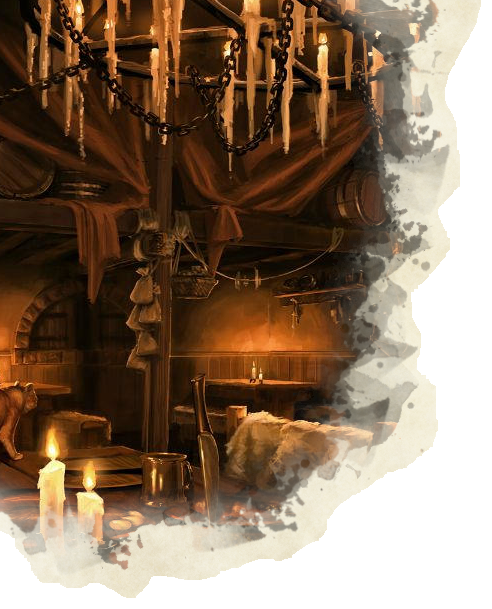
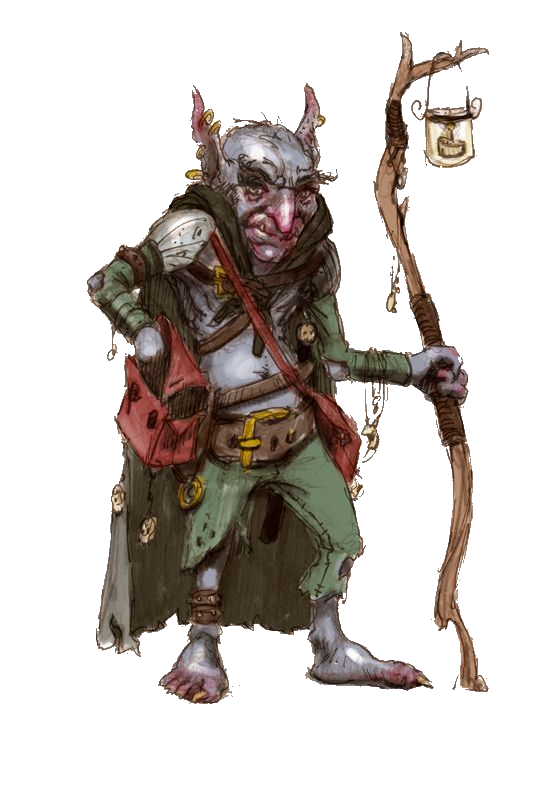
Gremlin Names
Gremlin names are bastardizations of names stolen from Common and Infernal. Self-inflating gremlins demand to be called by epithets that pay homage to their greatest, most absurd, and often fictitious accomplishments.
- Gremlin Names: Angrex, Beelgud, Chadkathorn, Connerdan, Dizorl, Hanzuun, Jeniker, Lutz, Markoth, Renoz, Richeon, Rumgruz, Spitz, Sveno, Ulgrahm, Wenfir, Xazeruth, Zazz
- Epithets: Bean Bandit, Blightlord, Candlekeep Swindler, Coat Hangman, Conquerer of the Cupboard, Count who Counts, Galleon Scuttler, Grim Hammerer, Icewind Mugger, Little Xanathar, Lord of the Living Room, Steam Dragon of the Kettle, Tub Pirate
Gremlin Traits
Your gremlin character has the following racial traits.
Ability Score Increase. Your Intelligence score increases by 2.
Age. Gremlins reproduce like vermin, reaching maturity by age 3 and only living until age 50.
Alignment. Gremlins are chiefly chaotic and pay no heed to the rule of law or societal norms. Gremlins aren't mindless, rampaging forces of destruction, however. Gremlins will surreptitiously loot and bedraggle the houses of rivals as much as they believe they can get away with. Good-aligned gremlins aren't unheard of, but the notions of charity, forgiveness, and respect are antithetical to the gremlin creed. The exception are the bleareye gremlins, which genuinely enjoy the company of others and adhere to conventional virtues. Most gremlins are evil.
Size. Usually a foot or less in height, gremlins utilize their size to burgle, snoop, or infiltrate and foil the insides of machinery. Your size is Tiny.
Speed. Your base walking speed is 25 feet.
Dismantle. You have advantage on attack rolls and ability checks made to break or dismantle objects.
Additionally, you deal extra damage when you hit an object or a construct with an attack. This damage equals half your proficiency bonus, rounded up.
Languages. You can speak, read, and write Common and Infernal. Gremlins speak in a pidgin form of Infernal, which is modified from—but mutually understandable with—standard Infernal. Anyone who is fluent in Infernal can identify gremlin pidgin.
Subrace. The incipient gremlins passed down their arcane abilities, creating entire lineages of magical miscreants. Three main subraces of gremlins exist: bleareye gremlins, grave gremlins, and house gremlins. Choose one of them for your character.
Bleareye Gremlin
Spawned by a sleeping beholder, bleareye gremlins bear a similar ability to conjure objects from their dreams. The somnambulistic gremlins live in an eternal state of half-awakedness, and have a habit of nodding off. They happily associate with all other forms of sentient life, either traveling with adventurers or serving as minions.
Ability Score Increase. Your Charisma score increases by 1.
Constant Slumber. You don't need to sleep, as you get enough rest from your state of half-slumber. Instead of sleeping during a long rest, you can keep watch, read, scribe, or perform similarly leisurely activities.
Darkvision. You can see in dim light within 60 feet of you as if it were bright light, and in darkness as if it were dim light. You can't discern true colors in darkness. Instead, everything appears in a dreamlike swirl of gloomy colors.
Dreamscape. As an action, you can manifest your dreams in a 15-foot cube centered on yourself. The cube becomes difficult terrain for other creatures as it fills with cluttered images of your design, like swarming butterflies, clacking mousetraps, or writhing vines. The cube moves with you and lasts for 1 minute. It ends early if you become incapacitated, if you die, or if you dismiss it as an action or bonus action.
Once you use this trait, you can't do so again until you finish a long rest.
Grave Gremlin
Harbingers of doom, grave gremlins silently gather around the dying like a murder of crows. They respect the dying in pious silence up until the point of their death, then the looting begins. Their evildoings often cause the spirits of the dead to come back with vengeance as will-o-wisps, ghosts, or other profane creatures.
An obsession with death leads many grave gremlins to associated lines of work, such as graverobbing, brewing poisons, and tending to the sick as plague doctors.
Ability Score Increase. Your Wisdom score increases by 1.
Detect the Dying. You know the location of any humanoid within 60 feet of you that has 1 hit point or fewer.
Grim Judgement. When you finish a long rest, roll a d20 and record the number rolled. You can choose to replace a death saving throw made by you or a creature that you can see with your d20 roll. You must choose to do so before the death saving throw is rolled.
Your d20 roll can only be used once, and you lose an unused roll when you finish a long rest.
Swan Song. When you are reduced to 0 hit points but not killed outright, you can choose to make up to three weapon attacks immediately before falling unconscious. You can also cast a cantrip with a casting time of 1 action in place of a weapon attack if you know any. You automatically suffer one failed death saving throw for each attack you make or cantrip you cast.
Once you use this trait, you can't do so again until you finish a long rest.
House Gremlin
Common and prolific, house gremlins are pervasive urban pests. They get their nickname from their tendency to make their homes within the walls of buildings, where they store burgled trinkets. Tame house gremlins act as servants, maids, cooks, and butlers for their hosts.
Ability Score Increase. Your Dexterity score increases by 1.
Hidden Pockets. As an action, you can touch an object weighing 50 pounds or less and transport it to a pocket dimension that is only accessible to you. The object must not be worn or carried by another creature, and keeping an object in the pocket dimension requires you to maintain concentration (as if you were concentrating on a spell).
When you lose concentration, the object appears on the ground in the nearest unoccupied space of your choice. It appears harmlessly in a manner that doesn't directly damage itself or any other objects or creatures.
Illusory Cloak. When you take the Dodge action on your turn, you can choose to become invisible until the start of your next turn.
Once you use this trait, you can't do so again until you finish a long rest.
Stealthy. You have proficiency in the Stealth skill.
Nix
The giant orange tulips of Sunsteppe's Lunzi marsh possess striking pigmentation and a fruity, whimsical scent. Just make sure a closed flower isn't occupied when you take a sniff. The awkward conversation with a resident nix is best avoided.
—Danzi Willowbark, halfling naturalist
As denizens originating from the whimsical Feywild, nixes come in an astonishing variety of shapes, colors, and temperaments. Despite their size, nixes exude gumption and personality. Be cautious of how you present yourself to a nix, lest you become the newest topic of gossip.
Clandestine Societies
Settled along ponds nearby humanoid lodgings, nixes gather in secretive societies. Nixes eavesdrop on their relatively giant neighbors while hunkered in hollowed out trees, under flower petals, or floating just under the surface of the water. Rumors spread like wildfire among nixes. Each socialite is often in tune with all of the goings-on in town, even if they don't know any of the residents personally. On top of that, nixes aren't immune to gossiping among themselves. Nix towns are a complex web of petty drama, social factions, and superficial friendships.
Undeterred by the incessant hearsay and scandals among themselves, nixes unify under the banner of their town to maintain its secrecy from outsiders. Nixes prefer to be secluded from the world at large to protect their secrets. The majority of nixes accept the spread of their personal information through their own society, but are paranoid of what may happen if it leaves nix confines. On top of that, ancient nix heirlooms passed down from generation to generation are hidden amidst the nixes, and often contain some flavor of magical power. It's best to protect such artifacts from prying eyes.
Water Loving Faeries
In many ways, nixes resemble their fey kin, elves and faeries. Nixes have lean muscles, no body fat, no facial hair, and long, pointed ears. Like eladrin from the Feywild, nixes have an extensive range of skin colors that run the gamut from dandelion yellow to deep twilight blue, to brilliant scarlet red, to verdant springtime green.
Like faeries, nixes sport an ample set of wings on their backs, allowing them to flutter in the breeze like butterflies. The wings resemble those of dragonflies or the aforementioned butterflies. Nixes care deeply about the state of their wings, vainly decorating them with flower petals or reflective bits of insect carapaces, and painting them to suit.
Although they aren't naturally adept swimmers, nixes adore the scenic views of ponds and lakes. To many nixes the tinkling ambiance of running water is more beautiful than any instrument. Where there is a handsome waterfall or a lily-filled lake, there is often a settlement of nixes nearby.

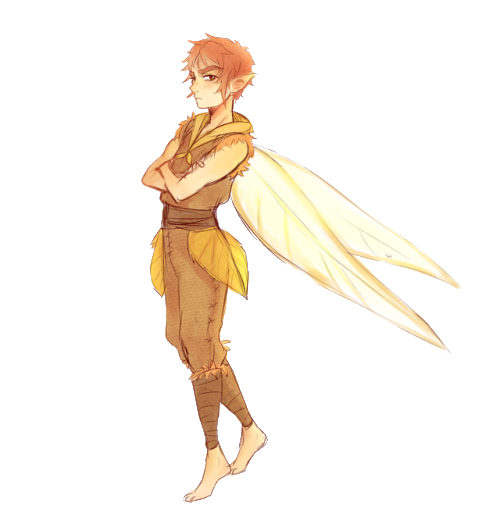
Familial Plants
Nixes do not use surnames to distinguish one family from another. Instead, families are distinguishable by sight alone. A budding young nix is born without any characteristic features and imprints on their surroundings as they age. As many nixes make their dwellings inside plants by the water's edge, they adopt similar colors and patterns. An adult nix might have autumnal wings reminiscent of their maple tree home, or vibrant purple hair if they grew up in a berry bush. As generations of nixes are born in a familial plant, they develop a unifying visual identity.
You can come up with your nix character's familial plant and their aesthetic, or you can roll on the Familial Plant table to determine the way you look.
Familial Plant
| d6 | Plant and Aesthetic |
|---|---|
| 1 | You grew up in a conifer tree. Your skin is jade green and you have brown hair shaped like a pine cone. |
| 2 | You grew up in a tulip grove. Your skin is mottled yellow and orange, and you have flowing red hair. |
| 3 | You grew up in a grassy field. Your skin is bright green and you have buzzed yellow hair. |
| 4 | You grew up in a mighty oak tree. Your skin is earthen brown and you have messy green hair. |
| 5 | You grew up in a pond of water lilies. Your skin is faintly blue and you have pink hair shaped like a water lily. |
| 6 | You grew up in a witchy thorn shrub. Your skin is pitch black and you have spidery white hair. |
Nix Names
Young nixes are given a name chosen by their parents and grandparents. Names usually harken back to an ancestor's name, or some variant of it. The basis of many nix names is a Sylvan word for a kind of plant or animal, particularly ones with symbolic meaning like oaks or eagles. By convention, male names end in a consonant while female names end in either A or I.
- Male Names: Bof, Dwaz, Frex, Hether, Ifin, Luck, Merk, Neef, Olif, Pip, Thort, Tottom, Verd, Wan, Zon
- Female Names: Adiata, Bella, Cina, Citra, Danici, Kynga, Moria, Nyri, Panda, Poppi, Riki, Shana, Teli, Yuri, Zomi
Nix Traits
Your nix character has the following racial traits.
Ability Score Increase. Your Dexterity, Wisdom, and Charisma scores each increase by 1.
Age. As creatures hailing from the sleepy Feywild, nixes have significantly longer lifespans than most creatures from the Material Plane. A nix reaches adulthood by age 50, and the oldest nixes can live for 550 years.
Alignment. Fickle beings they are, nixes are most often chaotic. Be it a yearning for harmless trickery or malice, their wild nature determines the basis of their decision making. Nixes have no inherent tendency towards good or evil, although most are neutral or good.
Size. Nixes stand between 8 inches and 1 foot. Your size is Tiny.
Speed. Your base walking speed is 20 feet.
Blossom. You know either the druidcraft or shape water cantrip. Wisdom is your spellcasting ability for your choice of cantrip.
Fey Ancestry. You have advantage on saving throws against being charmed, and magic can't put you to sleep.
Whimsy Flight. You have a flying speed of 30 feet. You can't fly higher than 60 feet off the ground from your point of takeoff using this speed.
Languages. You can speak, read, and write Common and Sylvan.

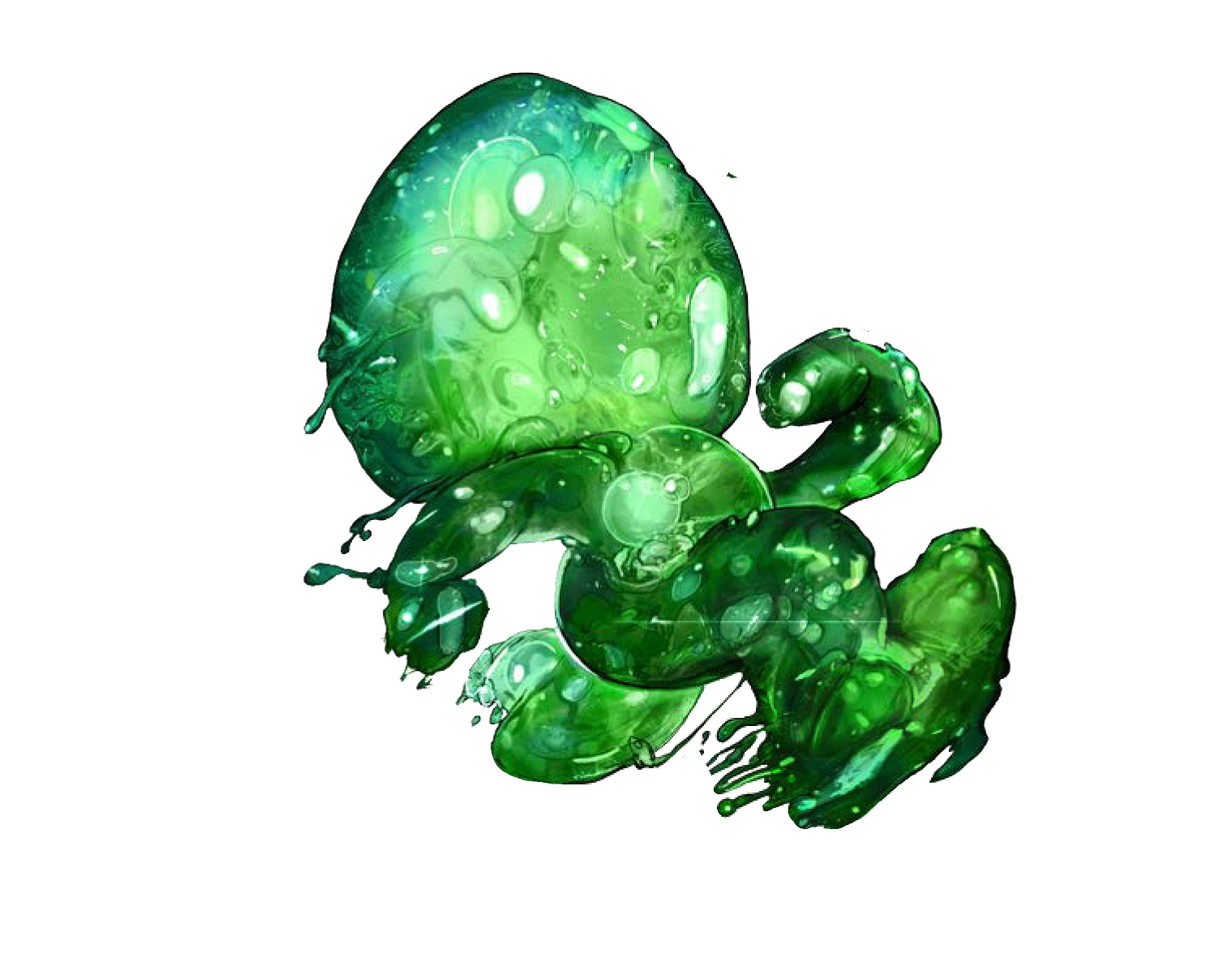
Pudding
Time is told by when the mice play.
Way down here there is no time of day.
The tippy toes splish splash in the muddy clay.
The mice splish splash in the deep dark gray.
—Unknown, pudding nursery rhyme
When one imagines a creature skulking through long forgotten halls, typical tropes include colossal arachnids, multiheaded monstrosities, and bloodthirsty stalkers. The diminutive puddings rarely come to mind, but also make a living in abandoned dungeons, dried up mineshafts, and echoing caverns. Puddings transform these subterranean places, ridding them of scourge and offal to make safe havens. A pudding refuge is a sight for any dungeoneering adventurer's sore eyes.
Oozes of the Oubliette
Living in eternal, reticent darkness plays tricks on the mind. Paranoia seeps in and imaginary sounds echo off the walls. And in the world of Dungeons & Dragons, grotesque creatures lurk through these sunken labyrinths, searching for their next meal. It's no wonder then that puddings are consistently on guard. A pudding's wariness defines them, sanctioning the oozy race's place in the underground ecosystem.
A pudding wandering in an unknown territory is a dead pudding. Thus, a pudding will start founding a territory by staying put and listening. Ever so slowly, the pudding will extend its range and purge or dissuade nearby monsters from entering. After the lengthy procedure is complete, a small pudding lodge can take root in a dungeon. Pudding settlements are highly coveted destinations by treasure hunters, as they provide respite from the cold unknown. Such communities can form out of moldy jail cells, ancient tombs, dank caves, or similar locales, and one can find loot for sale that has been scrounged up by the resident puddings.
Gelatin Bones and Slimy Skin
Puddings lack any rigid structures in their bodies. Instead, a complex matrix of fibers weaves around a flimsy, cartilaginous spine, holding the pudding's form together. A pudding can alter their gel matrix at will, causing their body to take a humanoid form or melt into a sludgy puddle. The ooze within a pudding is as caustic as stomach acid, and indeed it functions similarly. Puddings have no stomach. Instead, ingested food floats about in their bodies until it is slowly dissolved into its base nutrients. The digestive ooze of puddings ranges in color anywhere in between golden ochre, matte gray, oily black, and radiant green.
A pudding's fluid body is a blessing for the timid creatures when surveying a dangerous keep. While in amorphous form, a pudding can stealthily keep watch while hidden under a doorway or pretending to be liquid in a goblet. Additionally, a pudding possesses the ability to cleave off part of their body and send it elsewhere to check for dangers. In Common, puddings refer to their autonomous eyes as teeny scouts, and they are invaluable for examining a dungeon chamber before entering.
Optional Creature Types
All of the races in Tiny Races Underfoot are considered to be humanoid by default. However, the Dungeon Master may decide to give nixes, puddings, or wealdkin the Hybrid Nature trait, described below.
Hybrid Nature. You have two creature types: humanoid and another type determined by your race (fey for nixes; ooze for puddings; or beast for wealdkin). You can be affected by a game effect if it works on either of your creature types.
Heading Sunward
Despite their pounding paranoia, most puddings take some morsel of comfort from their cozy dwellings. However, more adventurous puddings may choose to leave their subterranean lodgings and overcome their paranoia. If you are playing as a pudding, it is likely that your character has been able to put aside their anxieties and travel sunward.
Leaving the underground is a personal decision for a pudding to make, and the reasons are varied. When you are creating your backstory, consider why your pudding character has decided to become an adventurer. You can come up with your own reason, or you can roll on the Ascension Motivation table.
Ascension Motivation
| d6 | Motivation |
|---|---|
| 1 | You are sick of eating only moss, vermin, and mushrooms. You've ventured off to experience gourmet dining. |
| 2 | You haven't figured out a method of creating light, and you are tired of everything appearing gray with your darkvision. |
| 3 | Ordinary objects in your dungeon abode sprung to life and attacked you. You barely escaped alive. |
| 4 | Each night, you heard a tortured moaning sound originating from below your lodge, and each night, it grew closer. You left before you found out its source. |
| 5 | You spent years crafting doodads in solitude without a single adventurer finding your lodge. Now it's time for you to head to the surface and sell your trinkets. |
| 6 | Pledging yourself to a clan of hungry mimics, you've gone off to lure a witless humanoid to the mimic den. |
Pudding Names
Traditional pudding names are written in Squelch, a braille language conveyed by contorting the body into stamps and stippling another pudding. If a pudding is communicating verbally with other humanoids on a regular basis, they may claim a name in Common. Pudding names in Common are invented by combining different types of sensations, such as sounds, textures, flavors, emotions, colors, and aromas.
- Common Names: Ashlost, Buzzsoft, Creambright, Darkfear, Dreambounce, Drippingcharm, Envymust, Graymelancholy, Honeysuckle, Illmelt, Lonelyblack, Plumskip, Roughsalt, Serenemist, Smoothzeal, Soggybabble, Sourjoy, Stronggold, Velvetzane, Vibevuggy, Zencozy
Pudding Traits
Your pudding character has the following racial traits.
Ability Score Increase. Your Constitution score increases by 2, and your Wisdom score increases by 1.
Age. A pudding child occasionally forms when two or more teeny scouts merge. Puddings reach adulthood by the age of 12 and can live to be up to a century old.
Alignment. Avoiding all extremes, puddings are most often neutral. Staying wary is the best means of survival in the underground.
Size. Puddings are able to slightly stretch their bodies at will, but their resting height is between 10 and 16 inches. Your size is Tiny.
Speed. Your base walking speed is 25 feet.
Acidic. You have resistance to acid damage.
Darkvision. Accustomed to sunless dungeon chambers, you have superior vision in dark and dim conditions. You can see in dim light within 60 feet of you as if it were bright light, and in darkness as if it were dim light. You can't discern color in darkness, only shades of gray.
Ooze Anatomy. You can use an action to become amorphous or revert to your humanoid form. When you become amorphous, you can choose whether your equipment falls to the ground in your space or is engulfed by your body. While you are amorphous, you can move through a space as narrow as 1 inch wide without squeezing, given any equipment you have engulfed is also able to fit through the opening. You have no limbs while amorphous, and due to your lack of hands you can't wield weapons or shields, perform somatic components, or manually interact with objects. Armor and other equipment worn on your body isn't doffed when engulfed, and you still gain its benefits as if you were wearing it.
Teeny Scout. As an action, you can pinch off a portion of your body and deposit it as a teeny scout in your space. The teeny scout is 1 inch in diameter and weighs 1 ounce. It has an AC of 10 and has 1 hit point. As a bonus action on your turn, you can move the teeny scout up to 20 feet along the ground. The teeny scout has darkvision with a range of 60 feet and is blind beyond this radius. It can telepathically share with you what it sees (no action required). The teeny scout evaporates after 1 minute. It also evaporates if it is reduced to 0 hit points, if it is ever more than 60 feet away from you, or if you choose to end it as an action.
Once you use this trait, you can't do so again until you finish a long rest.
Languages. You can speak, read, and write Common and Undercommon. Additionally, you can read and write Squelch, a form of braille developed by puddings to transmit information between each other while remaining silent.
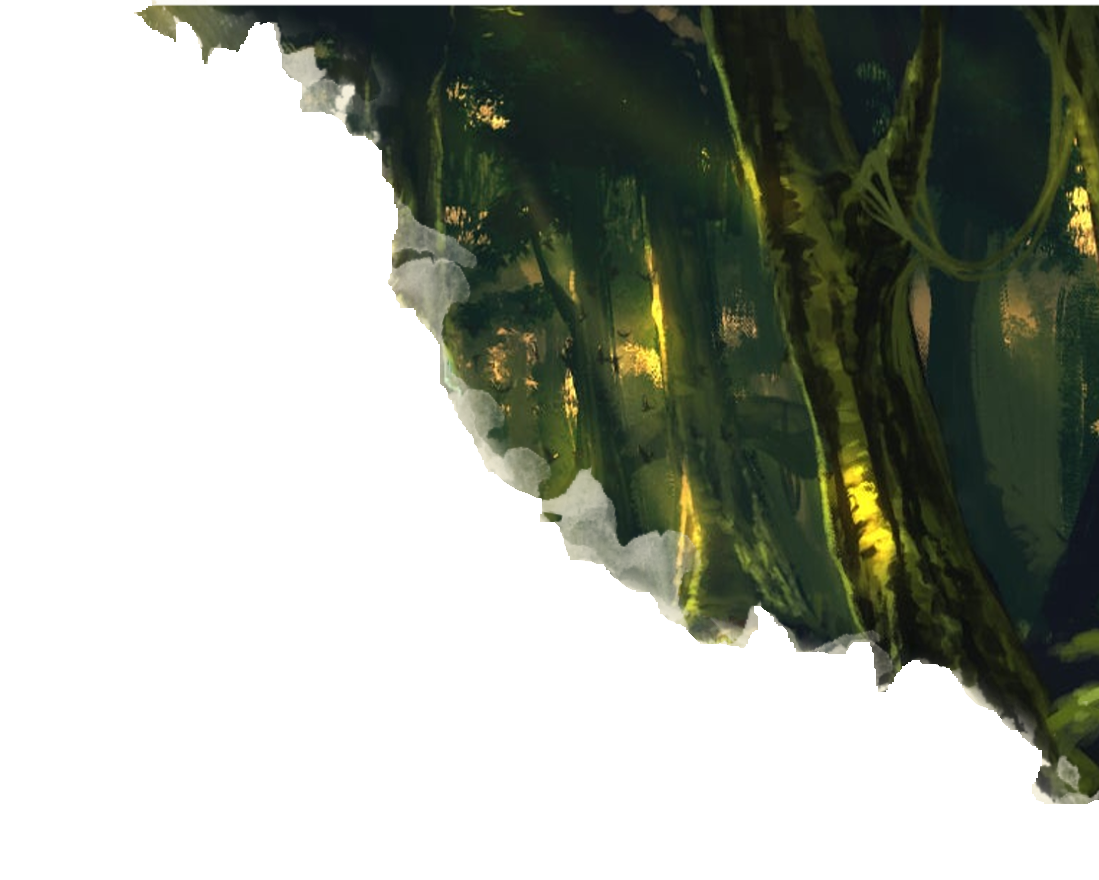
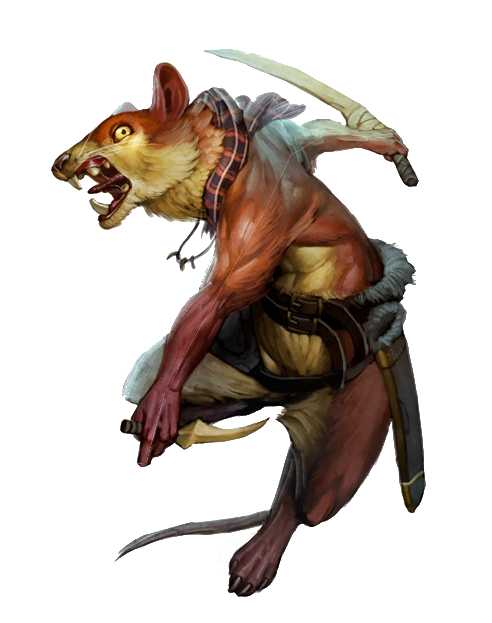
Wealdkin
So the mousefolk have usurped your back farmland? You've come to the right place my friend, as I've dealt with a few of their kind in my days, and I know they respond well to a diplomatic parley. Firstly, all cheesy jokes are off the table. Like, jokes about cheese. They take that as grounds for lynching.
—Sikmund, hill dwarf shepherd
The forest understory—one day a serene landscape, the next, a battle-struck wasteland of leaf litter and fallen heroes. The unassuming wealdkin are responsible. They are tiny warmongering spirits, but don't let their meager height fool you. Wealdkin hold only one virtue true, that being their love of freedom. If you encroach on their personal autonomy or their sovereign territory, you best pray to your deity of choice for mercy, because the wealdkin certainly won't show you any.
Endlessly Warring
The political landscape of the underbrush is a complex network of rivalries, treaties, and threats of war. The armies of the forest are mainly comprised of wealdkin—fur-coated humanoids that resemble mice and raccoons, among other beasts. Clans of wealdkin are eager to wage battle over any petty matter, be it an unintended slight at the expense of an elder, childish pranks targeted at a low-ranking official, or even the fallout between romantic partners of once peaceful factions. Wealdkin clans define themselves by their prowess in battle, and they use their prestige to exert their influence throughout the forest. Particularly mighty clans are able to wrangle other forest creatures into their ranks, which may include giant owls, worgs, or lesser fey.
The mindset of wartime extends to domestic life in wealdkin societies. Judicial arbitrations are performed by duels, and young cubs idolize legendary soldiers. Young wealdkin are expected to join up arms someday, so all children receive combat training to some extent.
But despite the wealdkin's best efforts, there are times of peace. In such times, clans recuperate and build relationships with each other and with the larger folk. When unneeded in domestic battles, wealdkin soldiers sell their talents as mercenaries to the highest bidder.
Aspect of the Forest
When a wealdkin is born on a special occasion, such as a solstice, planetary alignment, or sacred holiday, there is a chance the newborn presents with an aspect of the forest. Wealdkin interpret the aspect as a sign and prophecize that the child is destined to achieve greatness.
If you are playing a wealdkin, you can choose to roll on the Wild Aspect table to see if you have such an aspect, and if you do, what form it takes. Aspects take the form of the defining characteristic of other forest creatures. Alternatively, you can choose to create your own aspect.
Wild Aspect
| d6 | Aspect |
|---|---|
| 1 | Bulky antlers resembling those of a deer or moose sprout from your head. |
| 2 | Warts cover your hands and legs as if you were part bullfrog. |
| 3 | Your feet end in sturdy hooves like those of a swift horse or a dependable donkey. |
| 4 | Your mouth is crowded by oversized boar tusks, which make your visage slightly resemble that of an orc. |
| 5 | Decorative feathers cling to your wrists, elbows, and knees, trimming you with a splash of color. |
| 6 | You have no special attributes, just like most of your kind, but can rise to greatness regardless. |
Wealdkin Names
For their first few years of life, cubs have no name and are instead referred to as the offspring of their parents. Upon reaching adulthood at the age of 5, a wealdkin chooses their own name in a coming of age ceremony.
Rather than using family names, all members of a clan share the same clan name. The inception of a clan name relates to the story of how the clan was founded, however apocryphal that story may be.
- Male Names: Alfonse, Baines, Benet, Cael, Davis, Falconner, Gram, Hudson, Ingram, Keaton, Leighton, Niles, Reed, Sterling, Vance, Wittington
- Female Names: Ainsley, Amylia, Babs, Charlette, Darcy, Fabienne, Finsley, Genevive, Jain, Kingsley, Lucelle, Margaux, Maryane, Rho, Sloane, Tilly
- Clan Names: Bushtail, Falcon-Rider, Fallen-Leaf, Flamehearth, Flicktail, Horsemane, Iron-Teeth, Many-Antler, Nuthoarder, Red-Eyes, River, Smallfoot, Squirrelbane, Trapper, Wizard-Sight
Wealdkin Traits
Your wealdkin character has the following racial traits.
Ability Score Increase. Your Dexterity score increases by 2.
Age. Young cubs reach adulthood by the age of 5 and can live to reach the age of 80 if they don't succumb to the violence of war first.
Alignment. Almost all wealdkin are neutral or good, if a little shortsighted, and are willing to put their lives on the line for what they believe in. Warmongers they are, wealdkin only attack perceived evil. The regimented structure of mousefolk society forces most individuals to fall in line and become lawful in nature. Raccoonfolk are mostly chaotic. Instead of organized battalions, raccoonfolk rely on improvised guerrilla tactics to fend off intruders.
Size. Depending on your subrace, you stand anywhere between 8 inches and 2 feet in height, with raccoonfolk towering over their minuscule mousefolk cousins. Regardless, your size is Tiny.
Speed. Your base walking speed is 25 feet, and you have a climbing speed of 25 feet.
Scurry. As an action, you can take the Dash, Disengage, and Dodge actions simultaneously.
Once you use this trait, you can't do so again until you finish a short or long rest.
Vermin Recovery. During combat, you can use a bonus action on your turn after taking the Dodge action or using your Scurry trait to spend one Hit Die and heal yourself. Roll the die, add your Constitution modifier, and regain a number of hit points equal to half the total, rounded up (minimum of 1 hit point).
Languages. You can speak, read, and write Common and one additional language of your choice.
Subrace. Wealdkin are separated into two main subraces, which differ based on size, countenance, and fighting style. Choose one of these subraces: mouse wealdkin or raccoon wealdkin.
Mouse Wealdkin (Mousefolk)
Mouse wealdkin, also known as a mousefolk, have a keen intellect and a strategic mind. All mousefolk are taught how to wield a blade, even those that choose to dabble in wizardry. They have a knack for making and executing plans.
A battalion of mousefolk marching towards your village is among the worst sides of fate you may find yourself on. Weeks before they arrive on an enemy's stoop, mousefolk infiltrators have already developed a ploy to ruin their rivals for good. Mousefolk aren't interested in pure bloodshed. Instead, they will burn crops, flood mines with diverted water, and disguise themselves as other races to sew deceit, leaving the village in a flurry of economic ruin and paranoia. By the time the battalion arrives, it's already too late.
Mousefolk resemble humanoid versions of common field mice. Common coat colors are light tawny orange, ruddy brown, pure white, and smooth black. Round ears peek up from on top of their heads, and long whiskers grow from under their nose. Grabbing a mousefolk by the tail is considered the highest form of disrespect.
Ability Score Increase. Your Intelligence score increases by 1.
Gladiator. You have proficiency with clubs, daggers, and sickles. You can wield simple weapons that have the Light property without any penalties from being Tiny.
Raccoon Wealdkin (Raccoonfolk)
Raccoon wealdkin, or raccoonfolk, are renowned for their ferocious strength. The average raccoonfolk can lift an object many times their size. With an inborn strength and sharp teeth and nails, raccoonfolk make for brutal adversaries.
Raccoonfolk societies are tightly knit, though most individuals live alone or with their immediate families. Cubs are taught to survive without reliance on anything but nature and their own two hands. As such, raccoonfolk form connections with the land and its residing spirits, becoming barbarians, druids, and rangers.
Raccoonfolk emulate the fighting style of the beast they resemble: the raccoon. An encounter with a raccoonfolk is a flurry of swipes and snarls, with each strike based on instinct rather than discipline. A raccoonfolk visiting a city is also subject to the whim of their instincts, and as such may not be able to help themselves from overindulging, stealing shiny objects, or general buffoonery.
Ability Score Increase. Your Strength score increases by 1.
Scratch and Bite. Your teeth and claws count as natural weapons, which you can use to make unarmed strikes. If you hit with them, you deal piercing damage equal to 1d6 + your Strength modifier, instead of the bludgeoning damage normal for an unarmed strike.
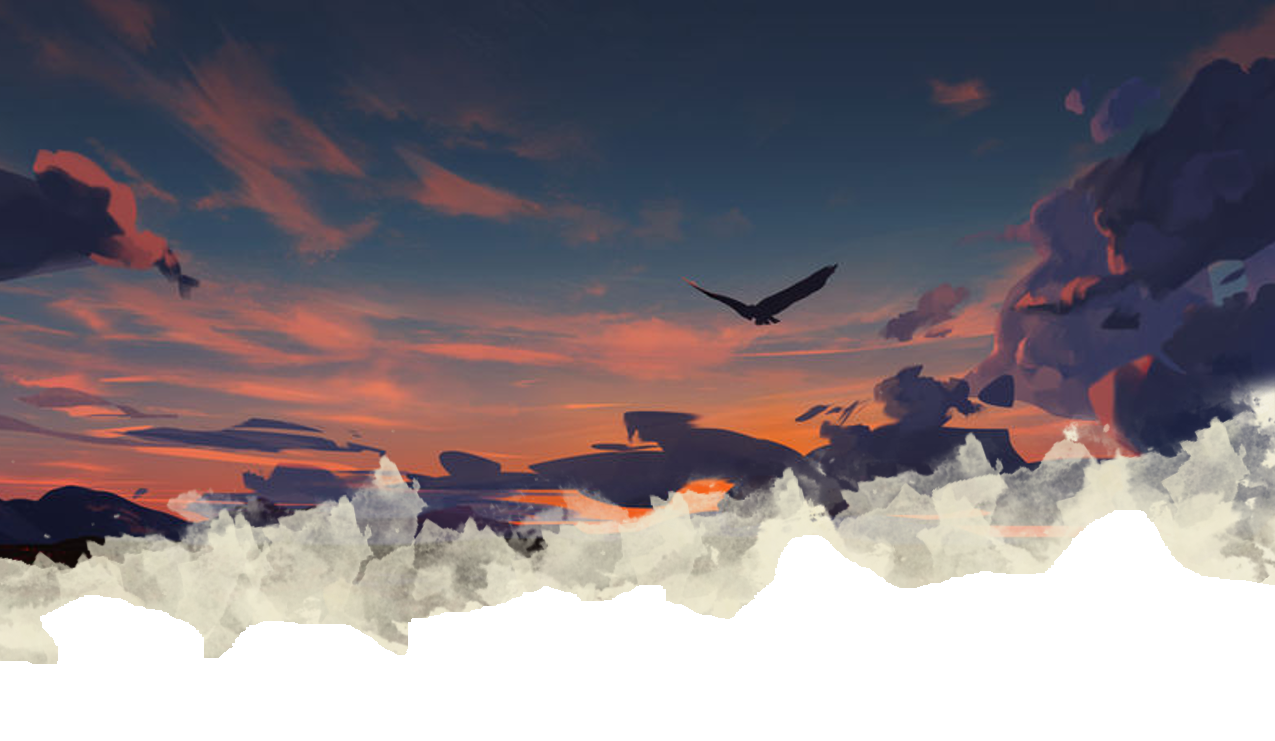
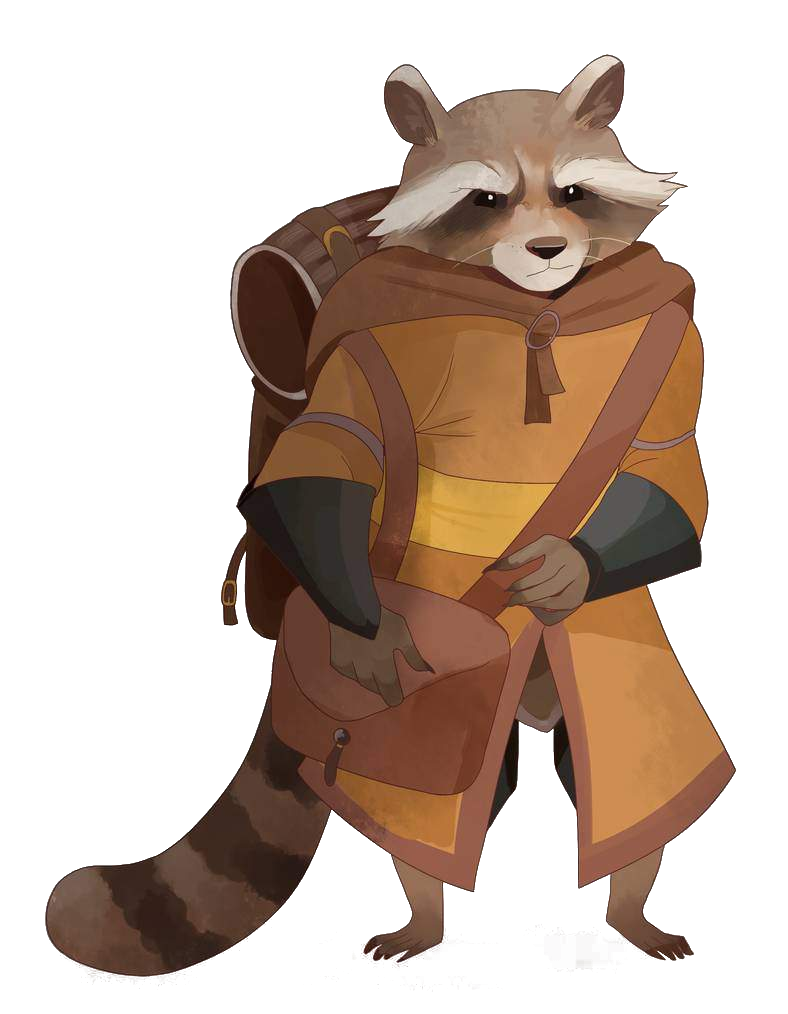
Tiny Racial Feats
This section includes a list of racial feats for Tiny characters. You can choose to take one of these feats in place of an ability score improvement, using the rules for racial feats in Xanathar's Guide to Everything.
The Tiny Racial Feats table summarizes the list of racial feats in this section. Squat Nimbleness, a feat that appears in Xanathar's Guide to Everything, is also available to Tiny characters. Shoulder Howdah, described below, isn't available to Tiny characters, but instead lets Medium-sized characters act as mighty steeds for their smaller companions.
Tiny Racial Feats
| Race | Feat |
|---|---|
| Any Medium race | Shoulder Howdah |
| Gremlin | Demolitionist |
| Gremlin | Squat Nimbleness* |
| Gremlin (bleareye) | Somniloquist |
| Gremlin (grave) | Holy Harbinger |
| Gremlin (house) | Myriad Pockets |
| Nix | Hydromancy |
| Nix | Squat Nimbleness* |
| Nix | Wing Dust |
| Pudding | Dungeonsense |
| Pudding | Squat Nimbleness* |
| Pudding | Superior Scout |
| Wealdkin | Squat Nimbleness* |
| Wealdkin | Warrior's Aspect |
| Wealdkin (mousefolk) | War Cunning |
| Wealdkin (raccoonfolk) | Rapid Healing |
Demolitionist
Prerequisite: Gremlin
You're an adaptable, chaotic force of destruction. You gain the following benefits:
- Increase your Dexterity, Intelligence, Wisdom, or Charisma score by 1, to a maximum of 20.
- The extra damage you deal with your Dismantle trait is no longer halved.
- As a bonus action on your turn, you can analyze an object or construct that you can see and plan for a crushing blow. The first attack roll that you make against the object or construct before the end of your turn is a critical hit if you roll a 15 or higher on the d20 for your attack roll. Once you score a critical hit using this feat, you can't use this bonus action again until you finish a long rest.
Dungeonsense
Prerequisite: Pudding
You've developed a connection with inside spaces. You gain the following benefits:
- As an action, you can touch a wall, floor, or ceiling and peer through it. Until the start of your next turn, you can see and hear as if you were in the nearest space on the other side of the surface. You can't perceive through a wall, floor, or ceiling that is greater than 5 feet thick, and a layer of lead of any thickness blocks your abilities to perceive through it.
- Whenever you make an Intelligence check to determine the purpose or origin of a room, you are considered proficient in the check and add double your proficiency bonus, instead of your normal proficiency bonus.
- Your teeny scout has blindsense out to 30 feet.
Holy Harbinger
Prerequisite: Gremlin (grave)
Grave gremlins that vow to vanquish undead gain the ability to shed tears that can bless water. You have taken the oath, and you gain the following benefits:
- Increase your Wisdom or Charisma score by 1, to a maximum of 20.
- When you finish a long rest, you can cry a single tear into a vial of fresh water, transforming it into a vial of holy water. The holy water lasts until it is used or until the end of your next long rest, in which case it reverts to normal water.
- You learn the gentle repose spell and can cast it once without expending a spell slot. You regain the ability to do so when you finish a long rest, and Wisdom is your spellcasting ability for it.
Hydromancy
Prerequisite: Nix
You command the flow of water, shaping it as you please. You gain the following benefits:
- Increase your Wisdom or Charisma score by 1, to a maximum of 20.
- You learn the create or destroy water spell and can cast it at will, without expending a spell slot. The spell's spellcasting ability is the ability increased by this feat.
- You gain a swimming speed of 30 feet.
Myriad Pockets
Prerequisite: Gremlin (house)
Your pocket dimension has subdivided and grown, allowing you to store more items and even creatures. You gain the following benefits:
- Two invisible, intangible bags of holding float around you within your space. Only you can access the bags of holding, and they both empty when you are reduced to 0 hit points.
- Using your Hidden Pockets trait, you can touch another willing Medium or smaller creature as an action and transport them to your pocket dimension. The creature is incapacitated while in your pocket dimension, and it can remain in your pocket dimension up to 1 minute or until you lose concentration, at which point they appear safely on the ground in the nearest unoccupied space of your choice. Once you transport a creature into your pocket dimension, you can't do so again until you finish a long rest.
Rapid Healing
Prerequisite: Wealdkin (raccoonfolk)
Your rough and tumble way of life leaves you with many wounds, but your superior regeneration rapidly heals your injuries. You gain the following benefits:
- Increase your Strength or Constitution score by 1, to a maximum of 20.
- You regain a single Hit Die whenever you finish a short rest.
- When you use your Vermin Recovery trait, you can choose to spend multiple Hit Dice at once, up to an amount equal to your proficiency bonus. You add your Constitution modifier to each Hit Die you spend, and you regain a number of hit points equal to half the total, rounded up.
Shoulder Howdah
Prerequisite: Medium race
You've trained with your minute companions and use your size to their advantage, acting together in concert. You gain the following benefits:
- Up to four Tiny humanoids can mount you at once. It costs a Tiny humanoid only 5 feet of movement to mount or dismount you, rather than half their movement.
- When you and Tiny humanoids that are mounting you roll for initiative, the creature that rolled the lowest can choose to match their initiative roll with the next highest member.
- As an action, you can perform a coordinated strike with Tiny humanoids that are mounting you. As part of the action, you can make one weapon attack, and each Tiny humanoid that is mounting you can choose to use their reaction to make one weapon attack. Once you make a coordinated strike, you can't do so again until you finish a long rest.
Somniloquist
Prerequisite: Gremlin (bleareye)
You learn how to materialize your dreams while you are sleeping. You gain the following benefits:
- Increase your Charisma score by 1, to a maximum of 20.
- While you are unconscious, you can see and hear your surroundings out to a range of 5 feet. Your perception while unconscious doesn't rely on your eyes and ears, but rather appears to you in your dreams.
- At the end of your turn while you are unconscious, you can choose to mumble in your sleep and roll on the Wild Magic Surge table in the sorcerer class. Charisma is your spellcasting ability for any spells you cast as a result of rolling on the table. You can mumble in your sleep three times using this feat, and you regain expended uses when you finish a long rest.
Superior Scout
Prerequisite: Pudding
You've mastered the use of your teeny scout. You gain the following benefits:
- Increase your Constitution or Wisdom score by 1, to a maximum of 20.
- You regain the use of your Teeny Scout trait when you finish a short or long rest.
- As an action or bonus action on your turn, you can destroy your teeny scout and appear in its space. If there isn't enough room for you to appear, you remain in place instead.
War Cunning
Prerequisite: Wealdkin (mousefolk)
You excel in tactical combat and using your larger opponents' weight against them. You gain the following benefits:
- Increase your Dexterity or Intelligence score by 1, to a maximum of 20.
- You can shove creatures up to three sizes larger than you.
- You can attempt to hide even when you are obscured only by a creature that is at least one size larger than you.
- You can use a bonus action on your turn to take the Ready action. You can't choose an action to ready that you've already taken on that turn. Once you take the Ready action using this feat, you can't do so again until you finish a long rest.
Warrior's Aspect
Prerequisite: Wealdkin
You latently grow a powerful wild aspect, marking you as a fabled forest warrior. You gain the following benefits:
- Increase your Strength or Dexterity score by 1, to a maximum of 20.
- You grow a wild aspect appendage that takes the form of the defining characteristic of a forest creature, such as a set of antlers, talons, or tusks. The appendage counts as a natural weapon and it deals 1d10 bludgeoning, piercing, or slashing damage, whichever is most appropriate for the appendage. You can choose to use either your Strength or Dexterity modifier for the attack and damage rolls of your appendage.
- If you are 6th level or higher, your appendage counts as magical for the purpose of overcoming immunity and resistance to nonmagical attacks and damage.
Wing Dust
Prerequisite: Nix
Like some other winged fey creatures, exemplary nixes can create magical dust using their wings. You are one such creature. As an action, you can sprinkle pale blue, rosy, or yellowish dust on a creature within 5 feet of you. After you sprinkle a color of dust, you can't sprinkle that color again until you finish a long rest. The creature you sprinkle gains a benefit based on the color of dust, as shown in the Wing Dust table.
Wing Dust
| Color | Effect |
|---|---|
| Pale blue | The creature doesn't need to breathe for 1 hour. |
| Rosy | The creature has advantage on saving throws against being charmed or frightened for 10 minutes. |
| Yellowish | The creature gains a flying speed of 30 feet for 1 minute, but they can't fly higher than 60 feet off the ground from their point of takeoff using this speed. |
Minuscule Mounts
Although Tiny characters can utilize standard mounts from the Player's Handbook, these characters are also able to train and ride smaller creatures, such as those listed in the Small Mounts table. As a perk of their modest stature, equipment used to outfit a Small mount is cheaper and lighter, as described in the Small-Sized Tack and Harness table.
At the DM's discretion, you may be able to purchase an exotic Small-sized beast from the Monster Manual as a mount, such as an eagle, jackal, blood hawk, giant rat, giant fire beetle, or giant centipede.
Small Mounts
| Item | Cost | Speed | Carrying Capacity |
|---|---|---|---|
| Goliath frog | 30 gp | 30 ft. | 165 lb. |
| Hound | 20 gp | 40 ft. | 105 lb. |
| Vicuña | 25 gp | 40 ft. | 150 lb. |
Small-Sized Tack and Harness
| Item | Cost | Weight |
|---|---|---|
| Barding | ×2 | ×1 |
| Bit and Bridle | 1 gp | 1/2 lb. |
| Saddle | ||
| Exotic | 30 gp | 20 lb. |
| Military | 10 gp | 15 lb. |
| Pack | 3 gp | 7 lb. |
| Riding | 5 gp | 13 lb. |
| Saddlebags | 2 gp | 4 lb. |
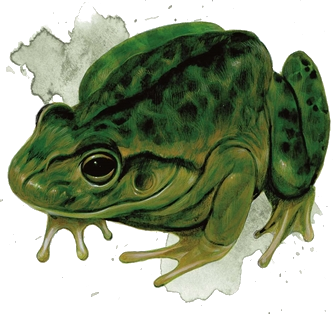
Goliath Frog
Small beast, unaligned
- Armor Class 11
- Hit Points 10 (2d6 + 4)
- Speed 30 ft., swim 30 ft.
STR DEX CON INT WIS CHA 11 (+0) 10 (+0) 15 (+2) 3 (–4) 8 (–1) 3 (–4)
- Senses passive Perception 9
- Languages —
- Challenge 0 (10 XP)
Amphibious. The goliath frog can breathe air and water.
Actions
Hop. The goliath frog long jumps up to 20 feet or high jumps up to 10 feet without using any of its movement. The goliath frog can't use this action while prone.
Goliath Frog
Found commonly in bullywug swamps, goliath frogs are peculiarly loyal and affectionate. They learn quickly and make steadfast companions. Beverages brewed with goliath frog skin have a mild hallucinogenic effect.
Hound
Hounds are the definitive hunting companion. For any sort of quarry you're after, be it a game animal or an enemy, there's a breed of hound for tracking it down.
Vicuña
As smaller cousins of the llama, vicuñas can be trained as caravan animals for tiny shepherds. Vicuñas are prized for their soft wool, which is used to make coats, scarves, quilts, and the like.
Hound
Small beast, unaligned
- Armor Class 13
- Hit Points 9 (2d6 + 2)
- Speed 40 ft.
STR DEX CON INT WIS CHA 7 (–2) 16 (+3) 12 (+1) 3 (–4) 14 (+2) 7 (–2)
- Skills Perception +4
- Senses passive Perception 14
- Languages —
- Challenge 1/8 (25 XP)
Keen Hearing and Smell. The hound has advantage on Wisdom (Perception) checks that rely on hearing or smell.
Actions
Bite. Melee Weapon Attack: +5 to hit, reach 5 ft., one target. Hit: 5 (1d4 + 3) piercing damage.
Vicuña
Small beast, unaligned
- Armor Class 12
- Hit Points 9 (2d6 + 2)
- Speed 40 ft.
STR DEX CON INT WIS CHA 10 (+0) 14 (+2) 12 (+1) 3 (–4) 13 (+1) 5 (–3)
- Senses passive Perception 11
- Languages —
- Challenge 1/8 (25 XP)
Actions
Spit. Ranged Weapon Attack: +4 to hit, range 20/60 ft., one target. Hit: 0 acid damage. If the target is a creature, it must succeed on a DC 10 Wisdom saving throw or be unable to willingly move closer to the vicuña until the end of their next turn. A creature that is immuned to being frightened automatically succeeds on the saving throw.